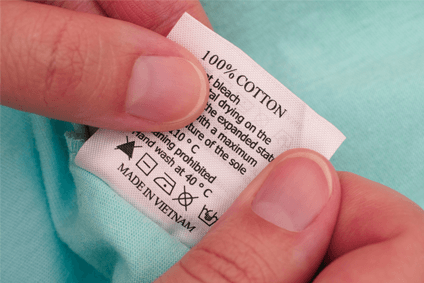
Month-by-month the US Department of Commerce’s Office of Textiles and Apparel (OTEXA) releases US garment import data. But does one month’s information really provide garment professionals with a greater understanding of the industry and the direction in which it is heading? David Birnbaum provides some answers.
An analysis of the June import data offers two general conclusions:
- US garment imports remained stagnant: imports by value rose by 0.5% but units fell by 0.9%. People are buying fewer garments and they are paying more.
- June data confirms that the 20-year period of FOB price reduction is over and we are moving into a world where we have to expect FOB price rises.
Analysing June data in relation to exports from single countries and/or regions poses some serious problems. Not the least of which is that as of June 2018, the US imported garments from 220 sources. Fortunately, we can reduce our selection to four suppliers that collectively account for 66% of imports by value and 74% by units: China, Vietnam, DR-CAFTA and Bangladesh.
When we look at June data in terms of the four countries our goal is to determine:
- Does it add to our understanding?
- It is irrelevant to our understanding?
- Does it obstruct our understanding?
China – Rank 1st: The irreplaceable
See Also:
US imports from China continue to decline. This is not due to Mr Trump but rather part of a long-term trend.
How well do you really know your competitors?
Access the most comprehensive Company Profiles on the market, powered by GlobalData. Save hours of research. Gain competitive edge.

Thank you!
Your download email will arrive shortly
Not ready to buy yet? Download a free sample
We are confident about the unique quality of our Company Profiles. However, we want you to make the most beneficial decision for your business, so we offer a free sample that you can download by submitting the below form
By GlobalDataNevertheless, most of that decline has been in value terms. We should not yet take China’s small decline in unit market share (42.2% to 41.9%) as meaningful.
The important factor is that China’s decline is almost entirely the result of its ability to reduce FOB prices. If anything, China’s decline in market share units should be seen as further evidence that aggregate FOB prices on US imports are about to move up, completely apart from the effects of the threatened increase in tariffs on made-in-China garments. The following chart shows the degree to which declining FOB prices have been the direct result of imports from China – and what would have been the results in a world without China.
Vietnam – Rank 2nd: Zooming ahead
Vietnam is a truly amazing country. As of 2001 its US garment market share stood at 0.1% as measured in both units and value. In less than 20 years this country has moved from being nowhere to becoming the US’s second-largest apparel supplier. Everything we see from June data reinforces our confidence in Vietnam’s future, not just as a garment supplier but as a major exporter of multiple products.
This success is based hard work, talent and a willingness to learn the nature of world trade. Vietnam is also the only country to benefit from the failed TPP (Trans-Pacific Partnership) agreement. At the time when everyone assumed that TPP would go forward, Vietnam was inundated with foreign investment in textiles – with the result that today it has one of the most modern and efficient vertical textile/garment industries.
Vietnam is certainly moving fast and in the right direction.
The industry has moved up to higher value-added garments. Apparel industries begin by exporting basic commodities – cotton T-shirts, cotton woven shirts, cotton pants, and cotton knit briefs. In this regard Vietnam was no exception. In 2003 the four commodities accounted for 58% of Vietnams’ exports to the US. As of the year ending June 2018 that had been reduced to 34%.
Countries often start industrial development with the garment industry. The best move on to other more sophisticated, higher value-added industries. In this regard Vietnam is also no exception. Vietnam may rank 2nd among US garment suppliers, but garments account for only 28% of Vietnam’s exports to the US. On a global basis Vietnam looks even better. As of 2016, electric and electronic goods accounted for 37% of total exports, compared with 11% for garments.
China + Vietnam: Duopoly
Today, China and Vietnam control US garment imports. As of June 2018, the duopoly accounted for 48% of all garment imports measured by value, up from 12% in 2002; and 55% measured in units, up from 11% in 2002.
June data simply confirms this 18 year trend.
DR-CAFTA – Rank 3rd: From up-to-down, to down-to-up, to up-to-down, to down-to-up, to…?
DR-CAFTA is one of the most interesting garment industry stories of all times. At various times, over a 70+ year period, these countries – Costa Rica, El Salvador, Guatemala, Honduras, Nicaragua and the Dominican Republic – went from nowhere to become the leading garment exporters to the US and then back to nowhere. Not just once.
More to the point, the DR-CAFTA story may provide an answer to the question underlying this entire article: If one month is insufficient to establish a trend, how much time must elapse before we can say that a trend has been established?
Based on the DR-CAFTA data, we can arrive at an answer: 10+ YEARS, which means that June data tells us nothing.
Definitely weird, but true.
From down-to-up and up-to-down I: The Caribbean countries were actually the largest exporters of garments to the US. Before Hong Kong, Taiwan, Korea and long before China, some major brands moved their factories from the US to the Caribbean: notably Dominican Republic. Some years later, when the Asian suppliers became more efficient, they superseded this early Caribbean-based export industry, which all but disappeared.
From down-to-up and up-to-down II: As you can see from the graph below, during the ten-year period from 1984 through 2003 the Central American and Caribbean countries exported more to the US than China. This was more than unusual: it was a singularity in the annals of industrial development because they achieved this with virtually no garment factories.
In 1985, the US instituted the Caribbean Basin Initiative (CBI). Under normal US import regulations, any product in which any part of the production process takes place outside the US is subject to duty on the full FOB price. CBI permitted an exception. If US fabric was cut in the US, and the cut pieces sent to any CBI country where the pieces were assembled and the returned to US for final processing (pressing and packing), only the cost of the work carried out in the CBI country was subject to duty. The result were maquila factories. Rather than real factories, the maquilas were large sewing rooms. The CBI benefit continued up to 31 December 2004, when the quota regime came to an end.
From down-to-up and up-to-? III
In 2005 the US entered into a free trade agreement with Costa Rica, El Salvador, Guatemala, Honduras and Nicaragua (Dominican Republic added in 2007).
Regrettably, the DR-CAFTA free trade agreement brought little benefit until 2009 when the members recognised the first of two benefits: Free trade = Duty-Free Access.
Clearly if you want to take advantage of duty-free access, you want to produce and export garments with the highest duty rate. US duty rates for garments are based on a number of factors such a product type, knit vs woven and gender. However, fibre is the most important factor. A cotton T-shirt carries a duty rate of 16.5%, while the same T-shirt in manmade-fibre (MMF) carries a duty rate of 32%. No need to change the product, the factory or the workers’ skill-sets – just move from cotton to MMF.
In 2009, the DR-CAFTA factories finally recognised the importance of duty rates, which reversed the decline.
From up-to-up?
As I explained, DR-CAFTA enjoys two advantages. The first – duty-free access – has been understood and accepted.
The second is yet to come: Proximity
If you are located adjacent to your customer, you enjoy a great advantage, provided that fast delivery is important. In a world where slow delivery equals basic commodities and fast delivery equals fashion, DR-CAFTA should move into the fashion industry. Moving from T-shirts to knit dresses does require change; however, these changes are not overwhelming. After all, the sewing machine does not care if the garment is 25″ or 45″ long, and the price advantage more than compensates for the added 20″.
A remarkable story, made more remarkable by the fact that throughout these extended periods of success the Central American and Caribbean industry never developed; never moved up to higher value added garments; and never moved away from garments to more sophisticated industries. Its success took place despite the fact that for 60+ years it has been in a state of arrested development.
Bangladesh – Rank 4th: The exception that proves the rule
With a 9.4% increase in value and a 0.8% increase in units, Bangladesh is the fasting growing garment supplier in June 2018.
However, when we look more closely at the data we see that Bangladesh is in deep deep trouble, on a factory level, the industry level and the country level. The increased market share by value is 12 time greater than market share in units. It is not so much that the US is importing more made-in-Bangladesh garments, but rather that it is paying a higher FOB price. Nor, as we can see from the graph below, is this a recent trend.
The underlying problem is that Bangladesh factories’ productivity – between 40%-50% of international standards – is among the lowest of the world’s major garment exporters. As a result, in order to remain competitive, factories have had to rely on the lowest wages, the most excessive overtime, and the least rest days per month. However, as we can see from the next chart, low wages do not compensate for low productivity.
While garments constitute a relatively small percent of total exports in other major garment exporters, Bangladesh relies almost entirely on garments. In this respect Bangladesh is similar to DR-CAFTA with one important exception: as a result of its duty-free access, DR-CAFTA can make a living in a garment-only economy. Bangladesh cannot.
The inability of Bangladesh factories to move ahead, coupled with the inability of its industry to move ahead, is one of the main reasons why the Bangladesh industry cannot move ahead. The chart below says it all.
So what does the data for a single month show us? As we can see from the four case studies, it depends on the country:
- China and Vietnam provide greater understanding by making current trends clearer.
- DR-CAFTA tells us nothing because there are no real trends.
- Bangladesh obstructs our understanding.







